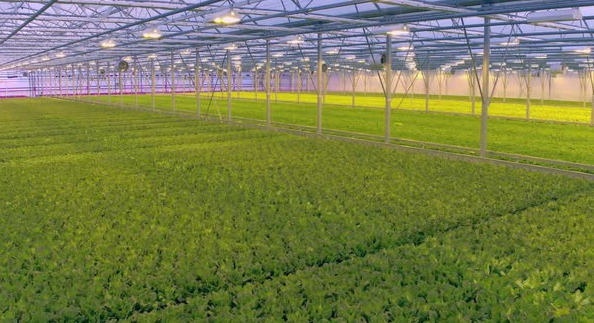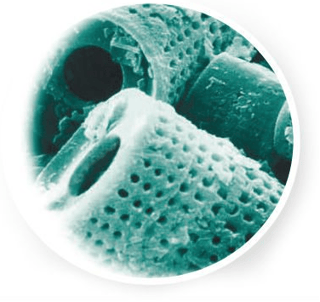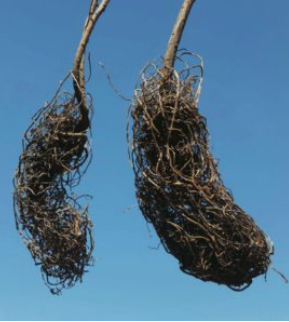
This week's blog post is courtesy of George Serrill, VP of EnviroTech Solutions, one of our valued distributors and and an expert in soil science. This article is featured in this month's Landscape and Garden Retailer magazine. Thanks George!
Having success in an indoor gardening department relies on many components. Here we tackle diatomaceous earth.
Any visit to a local garden center comes with a good dose of anticipation that you will find something new, pretty or useful. Ideas are inspirational, and you can find lots of them.
Indoor gardening has captured our imagination because growers gain control of the atmospheric conditions of temperature and light. These controlled environments enable precise dosing of inputs through fertigation coupled with timed light exposure for specifically designed plant responses.
Hydroponic systems add an alluring dimension of speed to the process with faster cultivation from seed to harvest.
When selecting growing media components, one of the most compelling choices is diatomaceous earth (DE) because it has a fascinating organic heritage, a wide array of benefits and uses, and is available in powder and aggregate form.
DE Defined
Wait! What? OK, so what IS diatomaceous earth?
Diatom is the root word in diatomaceous earth. Diatoms are the skeletal remains of single cell algae. When these were living, water flowed through their porous structures so they could extract nutrients for growth. Diatoms reproduced by the bazillions.
 Microscopic photo of diatomaceous earth
Microscopic photo of diatomaceous earth
These microscopic pieces died and accumulated as sedimentary layers on the bottom of lakes and oceans from long ago. Deposits of diatoms are called diatomaceous earth. They vary in quality, and deposits are chosen for their suitability for a particular use or purpose. It is mined and processed for a myriad of uses from liquid filtration, to industrial absorbents, to diatomaceous earth soil amendments.
DE comes from an organic plankton source, and products selected for feed additive, insect control, grain storage, pet and livestock dusting; and for plants, crops, soil, and soil-less media are eligible for organic approval by certification programs such as NOP and OMRI.
DE is very lightweight and available in two forms, aggregates for indoor gardening, hydroponic media, potting soil, and multiple landscape applications; and all-natural powders as an mechanical insecticide that to which insects cannot become immune.
Powder
DE powder for insect control is applied at 2 to 3 percent by volume, as a mechanical insecticide abrading and absorbing the waxy exterior protective layer of insects causing them to dehydrate and perish.
DE has a huge amount of surface area, which, to an insect, in or on the soil, translates to a deadly labyrinth of abrasive edges. Powders can be applied topically on the ground as a barrier to soil insects, blended into potting soil for prevention and larvae control, applied to foliage as a dust with a puff bottle or hand-cranked blower, or mixed as a wettable powder to spray on the top and underside of leaves. DE powder is approved for use on cannabis by the state of Colorado.
Look for labels that claim control of specific insects. Food Chemical Codex grade DE or labels approved for garden use can be used up to 24 hours prior to harvest; just be sure to wash your edibles well.
Aggregates
DE aggregates are very lightweight, reduce compaction and are kiln fired for stability. They do not break down and continue to perform long-term.
Aggregates come in a variety of sizes: larger aggregates (3/8-inch to 1⁄2-inch) suitable as inorganic hydroponic medium, coarse and medium grades (3/8-inch to 1/8-inch) for soil mixes and potting mixes, and a fine grade (like large sand) for use with potting soils to improve soil performance, with the added potential for insect control.
Aggregates also enjoy wide acceptance for rooftop gardens, structural soil, sports fields, landscapes, and bioswales. Aggregates are applied at 10 to 20 percent by volume and show impressive measurable increases for improved infiltration rates, water holding capacity, plant available water, increased porosity and increased air and water exchange.
DE aggregates are 82 percent porous, with a cation exchange capacity of 27, to help retain nutrients, while absorbing more than their own weight in water. This water, along with water borne nutrients, is readily available to plants. Mixed into soils, DE aggregates serve as additional reservoirs of porosity where water is absorbed and released, constantly exchanging air and water into and out of the granules, unit for unit, as moisture fluctuates. This creates a much more interactive soil profile for root growth, water uptake, and nutrient uptake.
 Seedling root structure grown in potting soil with 22 percent perlite. Right: Seedling root structure grown in potting soil with 22 percent diatomaceous earth aggregate.
Seedling root structure grown in potting soil with 22 percent perlite. Right: Seedling root structure grown in potting soil with 22 percent diatomaceous earth aggregate.
If you think you will save water you will because the formula to reduce irrigation is equal to improve plant available water in the soil. In fact, studies show that DE aggregates contribute more plant available water than compost (UC Davis) or peat moss (Ohio State). Translation? You can reduce irrigation amounts or frequency. Your choice.
Indoor Potting Soils. For indoor potting soils, DE aggregates can be applied at 15 to 20 percent by volume. This will increase the water holding capacity, homogenize moisture content throughout the pots, provide more plant available water and reduce watering needs. You will also notice the material doesn’t float and water goes into the soil much more readily.
The signature effect is much more abundant root mass that ensures proper uptake of water and nutrients. It is also widely accepted that additional silica uptake is happening, providing more plant turgor and vigor.
Outdoor containers with DE in the mix will experience similar results, but with higher contrast between moisture levels because of increased evapo-transpiration.
Hydroponics. For hydroponics, the largest granular size is used and rivals the best current mixes and minerals. A national brand research department leader said he “had never seen roots come out of the pot like that before.” DE is pH neutral and helps keep pH levels consistent because it is a mineral source of pH. It should be rinsed well before use with water.
The same principals of porosity, absorption of water and nutrients, root production and silica uptake, apply to this size aggregate. Materials like clay spheres and perlite do not have internal reservoirs to exchange moisture and nutrients, while other media with visible pores indicate pores that are too large and free draining, with less retention.
All the pores in DE, which are invisible to the naked eye, are the same pore size that determines plant available water (University of Augsburg, Germany). We recommend either 100 percent by volume or 40 to 60 percent mixed with coco coir. Users at these rates also remark they have fewer bugs.
Landscape Soils. Incorporating DE aggregates into existing or imported landscape soils is a great way to ensure successful establishment of every plant rung up at the counter. It provides permanent porosity to hard or sticky clay mixed in at 10 to 15 percent by volume. It is excellent for drought relief in hot climates, and suitable for turfgrass, trees, shrubs, gardens, and flowers.
Moreover, each plant will enjoy an environment that is physically conducive to the proper availability of water, nutrients and pore space to grow. Specialty applications like rooftops rely on DE aggregates for meeting weight restrictions due to its lightweight properties. DE is uniquely suited for bioswale treatments, adding porosity to prolong the lifespan of areas designed to collect silt, fine debris, and contaminants; while in roadside applications, DE has increased survival of non-irrigated plants from 20 to 25 percent to 70 to 99 percent.
As you can see, DE aggregates and powders are arguably the most versatile material available for plants and soil because their utility and effectiveness spans multiple uses and cultivation methods including hydroponics, indoor and outdoor growing.
Give your customers’ soil the life-giving gift of additional air and water reservoirs with DE aggregates, and protect your plants from pests with natural DE powder.

